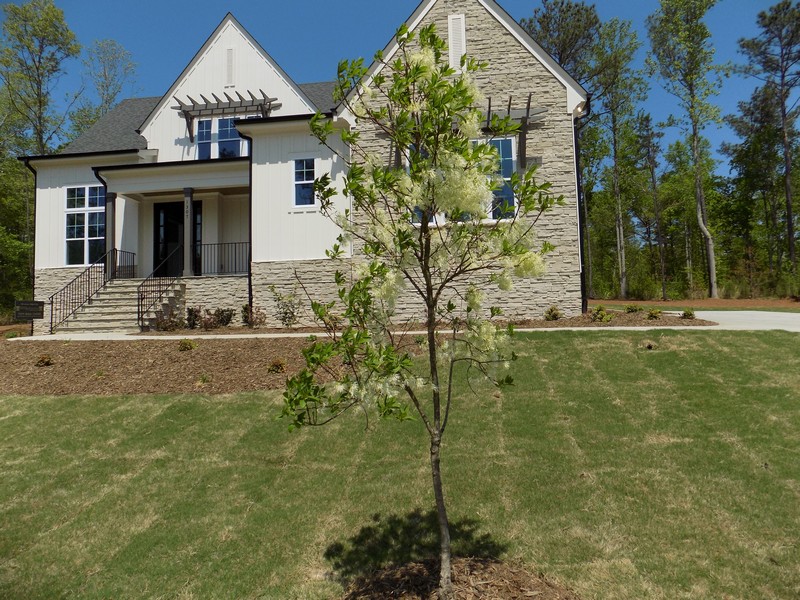What Makes a Home a Green Home?
What Makes a Home a Green Home?
April 26, 2017 | No Comments
April 22nd was Earth Day, a dedicated day for celebrating Mother Earth, with all its limited resources. As caretakers, it’s our job to do the best we can for our planet. Environmentally conscious builders have an opportunity to help by creating “green homes”.
Energy Efficient: What does it mean to be green?
According to the High Performance Building Council of the Triangle, it is “the practice of creating structures and using processes that are environmentally responsible and resource-efficient throughout the building’s life-cycle from siting to design, construction, operation, maintenance, renovation and deconstruction.”
Home Innovation Research Labs is an independent certification program that ensures homes meet the criteria for the National Green Building Standard™ (NGBS). The NGBS certification goes well beyond saying a home is energy efficient; it provides an independent, third-party verification that a NGBS Green Certified home is designed and built to achieve high performance in six key areas: Site Design, Resource Efficiency, Water Efficiency, Energy Efficiency, Indoor Environmental Quality, and Building Operation & Maintenance.
National Green Building Standard™ (NGBS) rating system provides an accessible and practical national standard to define and measure green homes. Every home must be inspected before drywall installation (rough) and when complete (final). The rough and final inspection reports are submitted for review to a Home Innovation NGBS Verifier before receiving the NGBS Green Certified Home designation. Due to the rigor of the NGBS, it provides consumers a level of confidence that they are getting an independently verified healthier and more comfortable home.
Site Design.
The lot is designed to avoid detrimental environmental impacts first, minimize any unavoidable impacts, and mitigate for those impacts that do occur. The project is designed to minimize environmental impacts and to protect, restore, and enhance the natural features and environmental quality of the lot.
Grayson Homes provides an “as built” survey, which shows how much land was cleared compared to how much land was left undisturbed, providing an environmentally friendly natural area. Builders are encouraged to use native plants to the area.
Resource Efficiency.
Engineered pre-fabricated components are used in the framing to reduce material waste. Design included flashing details that provide enhanced durability and reduced maintenance of the project. In addition to the home having a built-in recycling collection, the construction waste is being recycled while under construction.
Each Grayson Homes house comes with both a garage and recycling bin within the kitchen cabinet.
Energy Efficient.
Third-party inspected insulation and air sealing held to stringent guidelines with Grade 1 insulation installed; meaning there are no gaps and air leaks. The home also features energy efficient windows, 95% energy efficient lighting and Energy Star appliances that use less energy and save homeowners money. Overall, these features reduce electric bills and remove drafty areas for a more comfortable home.
Water Efficiency
Homes include water saving lavatory faucets, shower heads and Energy Star appliances. Low flow faucets are 20% more efficient than regular faucets and can save up to 700 gallons of water per year, which is equal to 40 showers worth of water.
Indoor Environmental Quality.
Homes have installed at least “MERV 8” filters on the HVAC system to help increase indoor environmental quality. Minimum Efficiency Reporting Value (MERV) 8 Filters allow fewer dust particles and airborne particles pass through giving us cleaner air to breathe. A typical home filters are MERV 4 while hospital operating room filters are MERV 16. At Grayson Homes we use MERV 11 filters in our HVAC systems.
In addition to the HVAC, the indoor air quality is also achieved with low emission pad and carpeting, as well as low emission insulation. Volatile organic compounds (VOCs) are emitted as gases from certain solids or liquids, and include a variety of chemicals, some of which may have short- and long-term adverse health effects. Concentrations of many VOCs are consistently higher indoors (up to ten times higher) than outdoors.
Organic chemicals are widely used as ingredients in household products. Paints, varnishes and wax all contain organic solvents, as do many cleaning, disinfecting, cosmetic, and degreasing products. All of these products can release organic compounds while you are using them. Studies have found that levels average 2 to 5 times higher indoors than out.
Improving our indoor air quality by using low emission carpet and padding, for example, makes us think and feel better, have more energy, and allow less irritants in our eyes and lungs.
Operation, Maintenance, Owner Education.
Each homeowner will be provided an operation, maintenance and homeowner education book. As a homeowner, knowing how to maintain your home as it was designed will give you years of comfort and convenience. You will also be able to pass on this value during re-sale.
A Home Innovation study reported 70% of Homebuyers were actively looking for a green home, while 66% of homeowners were aware and valued that their home is NGBS Green Certified.
If you are looking to build a more “Green” custom home, contact Grayson Homes, a custom homebuilder in the Raleigh/Triangle area, for a quote.

